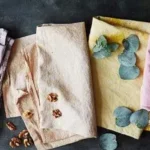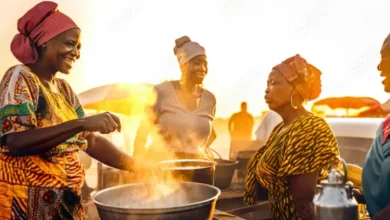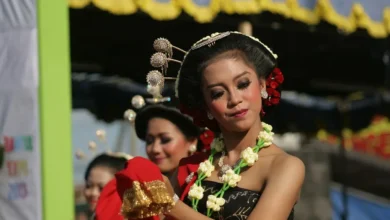Traditional Weaving Techniques: A Deep Dive into Ancient Crafts
Weaving, a craft as old as civilization itself, encompasses a vast array of techniques passed down through generations. From simple utilitarian cloths to intricate, richly decorated textiles, woven fabrics have played a vital role in human history, reflecting cultural traditions, technological advancements, and artistic expression.
This article explores various traditional weaving techniques, examining their unique characteristics, tools, and cultural significance.
Warp and Weft: The Fundamental Principles

At the heart of any weaving process lies the fundamental interplay of warp and weft yarns. The warp yarns are the longitudinal threads, stretched taut on a loom, forming the foundation of the fabric. The weft yarns, on the other hand, are interwoven horizontally across the warp, creating the fabric’s structure and pattern.
The way these two sets of yarns interact determines the fabric’s texture, drape, and overall character. The tension of both warp and weft is crucial, affecting the final product’s quality and aesthetics.
See also Natural Pigments for Dyes in Clothing
Natural Pigments for Dyes in ClothingThe Loom: A Weaver’s Essential Tool
Looms vary enormously in complexity, from simple backstrap looms, portable and easily adaptable, to complex floor looms capable of producing large and intricate textiles. The loom’s structure dictates the weaving technique employed and the scale of the project.

Key components include the warp beam (holding the warp yarns), the heddles (controlling the raising and lowering of warp threads), the reed (spacing the warp threads evenly), and the shuttle (carrying the weft yarn across the warp).
Different loom types include:
- Backstrap Loom: A simple, portable loom using a backstrap for tension.
- Table Loom: A smaller, tabletop loom suitable for smaller projects.
- Floor Loom: A larger, more complex loom for larger-scale weaving.
- Inkle Loom: Used for creating narrow bands or tapes.
Plain Weave: The Simplest Technique
Plain weave is the most basic weaving structure, characterized by one weft yarn over one warp yarn, then under one warp yarn, repeatedly. It creates a simple, even fabric with a smooth surface. While seemingly basic, variations in yarn thickness, color, and fiber content can create a surprising range of textures and visual effects. Plain weave is the foundation for many other more complex techniques.
See also Local Innovations in Traditional Clothing
Local Innovations in Traditional ClothingTwill Weave: Diagonal Patterns and Texture

Twill weave introduces a diagonal pattern to the fabric by passing the weft yarn over more than one warp yarn, then under one or more. This creates a characteristic diagonal line running across the fabric. The angle and complexity of the twill can be varied, producing a wide range of textures and patterns. Herringbone and twill are examples of twill weave structures.
Satin Weave: Smooth, Luxurious Fabrics
Satin weave is known for its smooth, lustrous surface. Achieved by creating a long float (a series of warp or weft yarns passing over several yarns before going under one), it minimizes the interlacing of warp and weft, creating minimal texture and maximum sheen. It’s typically used for fabrics like satin and sateen, renowned for their drape and shimmering appearance. However, this technique can make the fabric less durable, prone to snags.
Tapestry Weaving: Intricate Images and Narratives
Tapestry weaving uses a technique of completely covering the warp threads with weft threads, creating detailed images and patterns. Different colored yarns are interwoven to form the design, often without any visible warp threads on the face of the finished piece.
This technique is labor-intensive, requiring a high level of skill and patience, and is often used to create large, complex narrative tapestries.
Brocade Weaving: Raised Patterns and Ornamentation
Brocade weaving utilizes supplementary weft yarns to create raised patterns and decorative elements on the fabric’s surface. These supplementary wefts float over sections of the fabric before being interwoven, creating a three-dimensional effect. This technique allows for intricate designs and often results in luxurious, richly ornamented textiles.
Double Weave: Creating Layers and Texture
Double weave involves weaving two separate layers of fabric simultaneously, using two sets of warp and weft yarns. This creates a unique double-layered fabric with the potential for creating reversible textiles or fabrics with distinct textures on each side. It is a more complex technique but produces visually and texturally intriguing results.
Natural Dyes and Traditional Colorants

Historically, weavers relied on natural dyes sourced from plants, insects, and minerals to color their yarns. These dyes, often produced using time-consuming and complex processes, produced a range of vibrant and subtle colors, often reflecting the local environment. The use of natural dyes adds a significant layer of cultural significance to traditionally woven textiles, with the color choices often imbued with symbolism and meaning.
Examples of natural dyes include:
- Indigo: From the indigo plant, producing deep blues.
- Madder: From the madder root, producing reds and pinks.
- Woad: Producing blue dyes similar to indigo.
- Cochineal: From the cochineal insect, producing bright reds.
Cultural Significance and Regional Variations
Traditional weaving techniques are deeply embedded in the cultural heritage of various communities worldwide. Each region exhibits unique variations in techniques, patterns, and materials used. These variations reflect the unique environmental conditions, artistic traditions, and cultural beliefs of the people who practice them.
For example, the intricate kente cloth of Ghana, the vibrant ikats of Indonesia, and the richly patterned Navajo rugs of the southwestern United States all reflect distinct cultural identities and artistic expressions.
The Modern Revival of Traditional Weaving
In recent years, there has been a growing resurgence of interest in traditional weaving techniques. This revival is driven by a renewed appreciation for handcrafted artistry, sustainable practices, and the preservation of cultural heritage.
Many communities are actively working to revitalize their traditional weaving practices, passing on their skills to younger generations and adapting these techniques to contemporary contexts. This revival has also led to collaborations between traditional weavers and contemporary designers, resulting in innovative and exciting textile creations.
Preserving the Legacy: The Importance of Documentation and Education
Preserving traditional weaving techniques requires ongoing efforts in documentation and education. Documenting the processes, patterns, and cultural significance of these crafts is crucial for safeguarding this valuable heritage for future generations.
Educational initiatives play a vital role in training new weavers, empowering communities, and ensuring that these unique traditions continue to thrive. The preservation of these techniques is not merely about preserving skills; it is about preserving cultural identity and the rich tapestry of human creativity.




